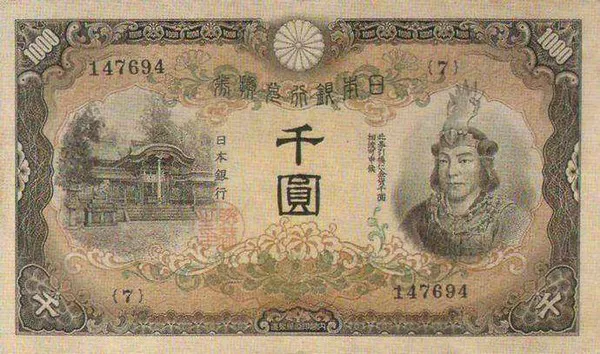The foreign exchange (forex) market is a dynamic and complex financial arena where traders buy and sell currency pairs to profit from price movements. One of the fundamental concepts in forex trading is the calculation of pips, short for “percentage in point.” Pips represent the smallest price movement in a currency pair, and understanding how to calculate them is crucial for traders. In this step-by-step tutorial, we will delve into how to calculate USD/JPY pips, a commonly traded currency pair.
Understanding the USD/JPY Currency Pair
Before we dive into calculating pips, it’s essential to grasp the basics of the USD/JPY currency pair. USD/JPY is a major currency pair in the forex market, representing the exchange rate between the US Dollar (USD) and the Japanese Yen (JPY). The USD/JPY pair is known for its liquidity and frequent trading activity, making it a popular choice among forex traders.
What Are Pips?
A pip is a unit of measurement that represents the smallest price change in a currency pair. It’s a standard way to express price movements in the forex market. Pips are crucial for determining profit or loss in a trade and for setting stop-loss and take-profit levels.
How to Calculate USD/JPY Pips
Now, let’s get into the nitty-gritty of how to calculate USD/JPY pips. To do this, you need to understand that pip value is affected by the size of the trade and the exchange rate.
Step 1: Determine the Pip Location
The first step in calculating USD/JPY pips is to identify the location of the pip in the price quote. For most currency pairs, a pip is the fourth decimal place in the price quote. However, USD/JPY is an exception, as it’s typically quoted with two decimal places. In this case, a pip is the second decimal place.
For example, if the USD/JPY exchange rate is 109.75, then the pip location is the “5” in 109.75.
Step 2: Calculate the Price Change
To determine the price change in pips, you need to compare the entry price with the exit price. Let’s assume you enter a long trade on USD/JPY at 109.75 and exit the trade at 110.00. To calculate the price change in pips, subtract the entry price from the exit price:
110.00 (exit price) – 109.75 (entry price) = 0.25 pips
In this example, the price has moved up by 0.25 pips.
Step 3: Account for Position Size
The value of a pip also depends on the size of your trading position. In forex trading, position size is typically measured in lots, with a standard lot equal to 100,000 units of the base currency. To calculate the pip value, you’ll need to know the size of your position in lots.
Step 4: Calculate the Pip Value
Now, you can calculate the pip value using the following formula:
Pip Value = (Pip Location / Exchange Rate) x Position Size
Using the example above, where the pip location is the second decimal place (0.01), the exchange rate is 110.00, and your position size is 1 standard lot (100,000 USD), the pip value would be:
Pip Value = (0.01 / 110.00) x 100,000 = $9.09
This means that for every pip movement in the USD/JPY pair, your profit or loss will be approximately $9.09, given your position size.
Step 5: Apply the Pip Value to Your Trades
Now that you know the pip value, you can apply it to your trading decisions. If you anticipate the price of USD/JPY to rise and enter a long trade with a 1 standard lot position, every pip increase will result in a profit of approximately $9.09. Conversely, if the price moves against your trade, you will incur a loss of the same amount for every pip decrease.
How to Calculate USD/JPY Pips with Different Position Sizes
The pip value can vary depending on the size of your trading position. To calculate pips for different position sizes, you can use the same formula mentioned earlier.
For example, if you are trading 0.5 standard lots of USD/JPY, the pip value would be:
Pip Value = (0.01 / 110.00) x 50,000 = $4.55
For a smaller position size of 0.5 lots, every pip movement will result in a profit or loss of approximately $4.55.
On the other hand, if you are trading a larger position, such as 2 standard lots, the pip value would be:
Pip Value = (0.01 / 110.00) x 200,000 = $18.18
With a position size of 2 standard lots, your profit or loss for each pip movement will be approximately $18.18.
Using Pip Calculations in Risk Management
Understanding how to calculate USD/JPY pips is not only essential for determining profit and loss but also for effective risk management. By knowing the pip value, you can set appropriate stop-loss and take-profit levels to control your risk.
For instance, if you are comfortable with a maximum risk of $100 on a trade and you are trading 1 standard lot of USD/JPY, you can calculate the distance in pips to your stop-loss level using the pip value:
Distance in Pips = Maximum Risk / Pip Value
Distance in Pips = $100 / $9.09 ≈ 11 pips
In this case, you would set your stop-loss level approximately 11 pips away from your entry point to limit your risk to $100.
Conclusion
Calculating USD/JPY pips is a fundamental skill for forex traders. It enables you to assess potential profits and losses, set risk management parameters, and make informed trading decisions. By following the step-by-step tutorial outlined in this article, you can confidently calculate pips for your USD/JPY trades, contributing to a more structured and successful trading experience. Remember that practice and experience will further enhance your ability to calculate pips accurately and use them to your advantage in the dynamic world of forex trading.
Related Topics:
Things You Need To Know About Converting Japanese Yen to British Pounds
The Decline of the Japanese Yen Against the US Dollar
Unraveling the Puzzle: Why JPY is Falling Against INR

























